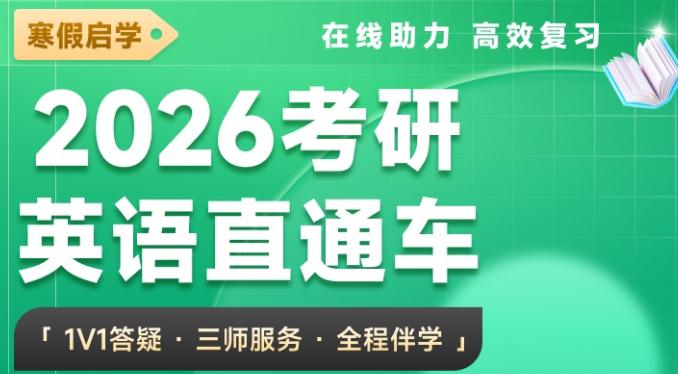1998-2022 ChinaKaoyan.com Network Studio. All Rights Reserved. 滬ICP備12018245號
2015年長春理工大學外國語學院英語方向考研初試大綱
英語方向考試大綱
總體說明:考試時間均為180分鐘,考試形式閉卷。
251二外日語或252二外俄語或253二外法語,總分100分;
612英語實踐與現代漢語,總分150分,包括英語實踐 (100分)和現代漢語(50分);
821語言學與英美概況或822語言學與英美文學,總分為150分,包括英語語言學(100分)和英美文學(50分)、或英語語言學(100分)和英美概況(50分) 。
612英語實踐與現代漢語考試大綱
第一部分:英語實踐(100分)
一、考試目的:
考察學生英語基礎知識包括文字、詞匯、閱讀理解、文章分析和翻譯、寫作等方面的水平和語言綜合運用能力。
二、考試要求:
1、能閱讀較高難度的英語文章,并能把握文章中的關鍵詞和中心思想,能概括出全文主旨;
2、具備較高文章的翻譯水平;
3、能根據要求寫出語言準確、表達得體,具有一定思想深度的文章。
三、考試題型及考試內容:
本考試采取客觀試題與主觀試題相結合、單項技能測試與綜合技能相結合的辦法。
第一大題:詞匯
本題為詞匯題,共20道小題。詞匯量要求為8000----10000。主要考察詞匯的辨認、辨析與搭配、近義詞等等,題型為四選一。
第二大題:閱讀理解
旨在測試考生語篇水平上的綜和理解能力,獲取信息的能力,概括與推理判斷的能力,閱讀速度以及語言的實際運用能力。閱讀材料題材廣泛,包括社會,文化,科普,史地,日常生活,人物傳記等內容;體裁多樣,包括敘事,議論,描述,說明文體等;文章為英語專業八級考試難度。
第三大題:完型填空
本題綜合考查語法、詞匯和篇章知識,共20道小題。要求考生根據所給選項在短文的20個空白處選擇正確選項,使之形成一篇完整的文章。
第四大題:翻譯
包括英譯漢和漢譯英。選材多為考生比較熟悉的文化、教育、社會、政治、科技等方面的文章,也可以是文學作品或一般文章,不涉及非常專業化的內容。評分辦法為總體印象評分法,根據譯文忠實原文的程度和流暢性給出一個總分。
第五大題:英語作文
本題要求考生就給出的作文題目寫一篇300字左右的英語作文,作文的形式為論說文,不能寫成小說或詩歌。評分辦法為總體評分法,內容和語言綜合考慮。
第二部分:現代漢語(50分)
一、考試目的
考察學生對現代漢語語法與修辭的基礎理論與基本知識的理解掌握情況,以及對基本的語法與修辭現象的理解與分析的能力。
二、考試要求
(一)理解并掌握現代漢語語法與修辭的基礎理論與基本知識;
(二)具備運用相關理論知識分析現代漢語語法與修辭現象的能力。
三、考試題型及考試內容
(一)考試題型
考試采取客觀試題與主觀試題相結合的方法,題型包括填空、單選、名詞解釋、分析題、簡答題等。
(二)考試內容
1.語法部分
(1)語法概說
(2)詞類
(3)短語
(4)句法成分
(5)單句
(6)檢查、修改語病的方法和原則
(7)復句
2.修辭部分
(1)修辭概說
(2)詞語的錘煉
(3)句式的選擇
(4)修辭格
四、參考書目
黃伯榮、廖序東.現代漢語(上、下冊).增訂五版.北京:高等教育出版社,2011年
821語言學與英美概況或822語言學與英美文學考試大綱
第一部分:英語語言學(100分)
一、考試目的:
考察學生英語語言學的基本理論知識和對英語及其它語言中一些語言現象的分析能力。
二、考試要求:
1. 熟悉語言學的基本概念和基本理論;
2. 具備運用相關理論分析語言現象的基本能力;
三、考試題型與考試內容:
本考試采取客觀試題與主觀試題相結合的方法,包括填空、單選、名詞解釋、分析題、簡答題
考試內容:(供參考)
1. Introduction
Definition of language; properties and design features of language; definition of linguistics; scope of linguistics; some important distinctions in linguistics: traditional vs modern linguistics; descriptive vs prescriptive grammar; langue vs parole; competence vs performance; synchronic vs diachronic linguistics; speech vs writing; functions of language(s).
2. Phonetics and Phonology
Definition of phonetics; organs of speech; place and manners of articulation; broad and narrow transcriptions; classification of English vowels and consonants; definition of phonology; phone, phoneme, and allophone; phonemic contrast, complementary distribution, distinctive features; minimal pair and sets; some rules in phonology like sequential rules, assimilation rules, and deletion rules; suprasegmental features.
3. Morphology
Definition of morphology; free and bound morphemes; derivational vs and inflectional morphones; morphological rules; morphs and allomorphs; ways of word-formation.
4. Syntax
Word classes; paradigmatic relation and syntagmatic relation; immediate constituent analysis; endocentric construction and exocentric construction; transformational generative grammar; systemic functional grammar; labeled and bracketed sentences; syntactic movement and movement rules; general principles and parameters of Universal Grammar; deep and surface structure; recursiveness; labeled tree diagrams.
5. Semantics
Definition of semantics; some views concerning the study of meaning; semantic triangle; sense and reference; seven types of meaning; semantic field; major sense relations of words; major sense relations of sentences; componential analysis; predication analysis.
6. Pragmatics
Definition of pragmatics; context; sentence meaning versus utterance meaning; speech act theory; principles of conversation; cooperative principle and its maxims; conversational implicatures; politeness principle; deixis; conversational analysis.
7. Socio-linguistics / Language and Society
Speech community and speech variety; regional and social dialects; idiolect; register; standard and non-standard language; lingua franca, pidgins, and creoles; diglossia and bilingualism; slang, linguistic taboo, and euphemism; code switching.
8. Language and Culture
Relationship of language and culture; Sapir-Whorf hypothesis; understanding the relationship between language and thought.
9. Historical Linguistics
The purpose and significance of historical linguistics; the nature and causes of language change; major periods in the history of English; linguistic change of English; language family
10. First and Second Language Acquisition
Language learning and language acquisition; the stages of first language acquisition; language transfer; interlanguage and fossilization; contrastive analysis, error analysis; comprehensive input; critical period hypothesis; individual learner factors
四、參考書目:
1. 戴煒棟:《新編簡明英語語言學教程》,上海:上海外語教育出版社,2002。
2. 胡壯麟:《語言學教程》,(第三版)北京:北京大學出版社,2006。
第二部分:“英美概況”(50分)
一、考試目的:
考察學生的綜合人文素質及語言使用情況。
二、 考試要求:
要求考生掌握英美國家的基本概況,包括地理、歷史、社會、政治經濟、文化傳統及語言的使用等諸方面的情況。
三、考試題型和考試內容
1.填空題:本題一般針對英美國家概況中的知識點,主要考察考生對英美國家的社會、歷史、政治、經濟、文化等方面的常識的把握情況。
2.名詞解釋:本題考察考生對英美國家概況中的重要歷史事件、重要運動、重要概念等方面的準確把握。
3.簡答題:要求考生對英美國家的政治制度、歷史發展或者社會變革等方面的重要問題進行闡述。
考試內容(供參考)
Britain
Section One The Country and the People
1.Full name and four countries of Britain.
2.Topography of Britain: highland zone and lowland zone
2.1The highest point: Ben Nevis
2.2The Backbone of England: The Pennines
3.Climate and Weather
3.1Mild and changeable
3.2Factors influencing climate and weather
4.Inland Water
4.1Thames River
4.2Lake District
5.People and languages:
5.1the native Celts, Celtic language
5.2Anglo-Saxons, English.
5.3The development of English: three major periods (Old English, Middle English, Modern English)
6.Religion
6.1The Holy Bible: Old Testament, New Testament
6.2Established churches: Church of England (Anglican Church) and Church of Scotland (Presbyterian)
Section Two The British Government
1.Constitutional monarchy: the monarch reigns, but does not rule.
2.The Monarch
2.1 Function of the monarch
2.2 Significance of the monarch
2.3 Royal palaces
3.Parliament: legislative branch
3.1The structure of the Parliament
The House of Lords and noble titles
The House of Commons
3.2 The function of the Parliament
4. The government: executive branch
4.1 Parliamentary government
4.2 Three-tier system of the British government
Section Three Politics and Law
1. Two-party system
1.1 Conservative party
1.2 Labor party
2. Elections: parliamentary election
3. Elements of the British law
4. Legal profession: barristers and solicitors
Section Four National economy and Cities
1. Economic system and structure
2. British Disease and Thatcher’s prescription
3. Main industries in Britain
4. The capital city of Scotland, England, Wales and Northern Ireland
Section Five cultural and Social Life
1.Class structure: upper, middle and working class
2.Newspaper in Britain: quality paper and tabloid paper
3.Education:
3.1Compulsory education
3.2Secondary education: public schools, grammar schools, secondary modern schools and comprehensive secondary schools
3.3GCSE and A Level
3.4Higher education: Oxbridge, Open University
4.Britain as a welfare state (from-cradle-to-grave social welfare program)
4.1NHS
4.2Social security program
4.3Personal social service
History
1. Origin of the English Nation
1.1The native Celts: Stonehenge & Celtic language
1.2The Roman invasion
1.3The Anglo-Saxons Conquest: Heptarchy
1.4The Norman Conquest (1066)
2. The Great Charter and Beginning of Parliament
2.1 Henry II’s Reforms: The Reform of Administration and Justice
2.2 King John and the Great Charter
2.3 Beginning of Parliament
3. Decline of Feudalism in England
3.1 The Hundred Years’ War.
3.2 The Black Death
3.3 The peasant uprising
3.4 The Wars of the Roses
4. The Tudor Monarchy and the Rising Bourgeoisie
4.1 Henry VIII and reform of the church
4.2 Golden age of Elizabeth I
4.3 Renaissance
5.Bourgeois Revolution
5.1 James I: Gunpowder plot, King James Bible, Jamestown, Mayflower Journey
5.2 Charles I: the short Parliament and the long Parliament
5.3 Cromwell: New Model Army, Lord Protector
5.4 Glorious Revolution in 1688
6. The Industrial Revolution and Chartist Movement
6.1 Background of the Industrial Revolution:
6.2 Process of the Industrial Revolution
6.3 Influence of the Industrial Revolution
6.4 The Chartist Movement
6.5 Victoria Age
7. The Rise and Fall of the British Empire
7.1 Foreign expansion
7.2 British empire
7.3 British Commonwealth
America
Section One The United States and Its Natural Conditions
1.Names and position
2.Topography: the Appalachians & the Rockies
3.Rivers and lakes
Mississippi River
Rio Grande River
Potomac River
The Great Lakes
Section Two American People
1. The composition of the population
2. The Indians
3. Immigration into America
4. Melting pot & Mosaic
Section Three Government and Politics
1. Three government principles
2. Separation of power
2.1The legislative branch
Main functions of Congress
The Senate
The House of Representatives
2.2. The executive branch
Powers of the U.S. president
General election: the winner-gets-all policy
2.3. The judicial branch
3. comment on check and balance system
Section Four National Economy
1.Factors contributing to the development of American industries
2.Economic system
3.Types of businesses
4.Main industries
Section Five Culture and Holidays
1. Traditional American values and beliefs
2. Holidays and Festivals
3. American education
4. Social welfare
History
Section One Native Indians and the Thirteen English-American Colonies
1. Contribution of Christopher Columbus
2.Founding of colonies
three kinds of colonies
Jamestown in 1607
Plymouth in 1620
Mayflower Compact
Section Two The War of Independence
1. Causes and consequences of the French and Indian War
2. The First Continental Congress
3. The Second Continental Congress
4. Contents and significance of the Declaration of Independence
Section Three Founding of the American Constitution and the Washington Administration
1.The Constitutional Convention
2.The American Constitution
3.The Bill of Rights
Section Four America During the First Half of the 19th Century----an Era of Expansion
1.Contributions made by Thomas Jefferson
2.Causes and effects of the Second War with England
3.Causes and effects of the Mexican War
Section Five The Civil War
1. Conflicts arising from the slavery
2.Significance of the Emancipation Proclamation
3.Effects of the Civil War
Section Six The United States After the Civil War
1.Situation after the Civil War
2.Monopoly businesses
3.Social Reforms
4.The war with Spain
Section Seven America During and After World War I
1.America’s entry into the First World War
2.New Culture
3.The Lost Generation
4.The Great Depression
5.New Deal
Section Eight America During and After World War II
1.America’s entry into the War
2.Cold War
3.Beat Generation
4.Vietnam War
5.War against terrorism
四、參考書目:
《新編英美概況》, 來安方,鄭州:河南人民出版社,2005年3月。
第二部分 英美文學(50分)
一、考試目的:
考察學生英美文學基本理論、知識的掌握和對英美文學作品的分析能力。
二、考試要求:
1.掌握英美文學基本知識,包括英美文學流派、思潮、作家作品等。
2.具備根據所學的英美文學基本理論知識對特定選文的寫作風格、思想內容等 進行初步分析的能力。
三、考試題型和考試內容:
考試題型:客觀試題與主觀試題相結合,包括術語概念解釋、填空、選擇、簡答問題、專題評論、實例分析等。
考試內容:(供參考)
英美文學考試內容包括英國文學和美國文學兩部分:
1.英國文學部分:
(1)早期和中古時期英國文學:了解古英語時期、盎格魯-薩克遜時期和諾曼底侵略后的英國文學產生的歷史、文化背景,理解該時期文學創作的基本特征,掌握該時期重要的文學作品及喬叟的創作思想、藝術特色和代表作品。
(2)文藝復興時期英國文學:了解文藝復興運動和人文主義思潮及其產生的歷史、文化背景,理解該時期文學創作的基本特征和基本主張,掌握該時期重要作家莎士比亞、培根、馬洛、斯賓塞等的文學生涯、創作思想、藝術特色及代表作品。
(3)十七世紀英國文學:了解保皇派作家、玄學派和清教徒作家的歷史背景、基本主張,掌握該時期重要作家彌爾頓、班揚、約翰•鄧恩等的創作生涯、藝術特色及代表作品。
(4)啟蒙運動時期英國文學:了解啟蒙運動、現實主義小說、感傷主義和新古典主義文學流派及其產生的歷史背景、主要特征和基本主張,掌握該時期重要作家斯威夫特、笛福、蒲柏、菲爾丁等的創作生涯、藝術特色及代表作品。
(5)浪漫主義時期英國文學:了解浪漫主義文學產生的歷史、文化背景,理解該時期文學創作的基本特征和基本主張,掌握該時期重要詩人彭斯、布菜克、華滋華斯、科勒律治、拜倫、雪菜、濟慈等的詩歌創作思想、藝術風格及代表詩作,小說家斯各特、奧斯汀等的寫作特點,藝術特色及代表作品。
(6)維多利亞時期英國文學:了解19世紀英國的政治、經濟、歷史、文化背景,理解19世紀批判現實主義小說在思想上的進步和創作技巧上的改革,掌握該時代主要作家狄更斯、薩克雷、勃朗特姐妹等的藝術特色、創作思想及代表作品。
(7)二十世紀英國文學:了解20世紀英國的政治、經濟、歷史、文化背景及其對現代主義文學作品的影響,理解現代主義文學的特色,掌握該時期主要代表作家哈代、蕭伯納、高爾斯華綏、勞倫斯、喬伊斯、伍爾夫等的藝術特色、創作思想及代表作品。
2.美國文學部分:
(1)殖民時期美國文學:了解美國殖民時期文學產生的歷史、文化背景,理解該時期文學創作的基本特征,掌握該時期代表作家安妮•布拉德斯特里特、愛德華•泰勒、托馬斯•潘恩、本杰明•富蘭克林、喬納森•愛德華茲等的創作思想、寫作風格及代表作品。
(2)浪漫主義時期美國文學:了解美國浪漫主義時期文學產生的歷史、文化背景,理解美國浪漫主義的定義、特點及其與英國、歐洲浪漫主義運動的異同,掌握該時期主要作家歐文、愛默生、霍桑、惠特曼、梅爾維爾等的文學創作生涯、創作思想、藝術特色及代表作品。
(3)現實主義時期美國文學:了解美國現實主義文學產生的社會和文化背景,理解地方特色主義和美國自然主義的特點,掌握該時期重要作家馬克•吐溫、亨利•詹姆斯、杰克•倫敦、西奧多•德萊塞等的文學生涯、創作思想、藝術特色及其代表作品。
(4)20世紀20年代美國文學:了解20世紀20年代美國的歷史背景和社會思潮,掌握意象主義及以龐德為代表的意象派詩人的創作思想和詩歌特點,掌握“迷惘的一代”時期特點,以及代表作家菲茨杰拉德、海明威、艾略特等的創作生涯、藝術特色及代表作品分析,掌握南方文藝復興時期特點,及代表作家福克納的創作特點、寫作風格及代表作品。
(5)20世紀30年代美國文學:了解20世紀30年代美國的歷史背景和社會思潮,掌握這一時期主要代表作家帕索斯、斯坦貝克、波特及主要劇作家奧尼爾、米勒、威廉斯等的創作思想、藝術特色及代表作品。
(6)戰后美國文學:了解戰后詩歌流派、小說特點及美國黑人文學,理解后現代主義、元小說、自白派詩人、紐約派詩人、垮掉的一代、荒謬派等重要文學流派和術語,掌握該時期重要作家海勒、馮內古特、厄普代克、貝婁、艾里森、莫里森、譚恩美等的創作思想、藝術特色及代表作品。
四、參考書目:
《美國文學簡史》 常耀信 南開大學出版社
《英國文學簡史》 劉炳善 上海外語教育出版社
《20世紀英美文學精選》 陳永國、吳景惠 吉林大學出版社
來源未注明“中國考研網\考研信息網”的資訊、文章等均為轉載,本網站轉載出于傳遞更多信息之目的,并不意味著贊同其觀點或證實其內容的真實性,如涉及版權問題,請聯系本站管理員予以更改或刪除。如其他媒體、網站或個人從本網站下載使用,必須保留本網站注明的"稿件來源",并自負版權等法律責任。
來源注明“中國考研網”的文章,若需轉載請聯系管理員獲得相應許可。
聯系方式:chinakaoyankefu@163.com
- 2026考研英語全程班 寒假班
- 權威高配師資親授技巧,教研千錘百煉科學提分。直錄播課相結合精講互動二合一,專業團隊精細化作文批改。講練結合,隨學隨練穩步提升。支持試聽~
- 主講團隊:王江濤、譚劍波、董仲蠡、許聰杰、陳志超、潘赟、鄭艷彤、易熙人

掃碼關注
了解考研最新消息












